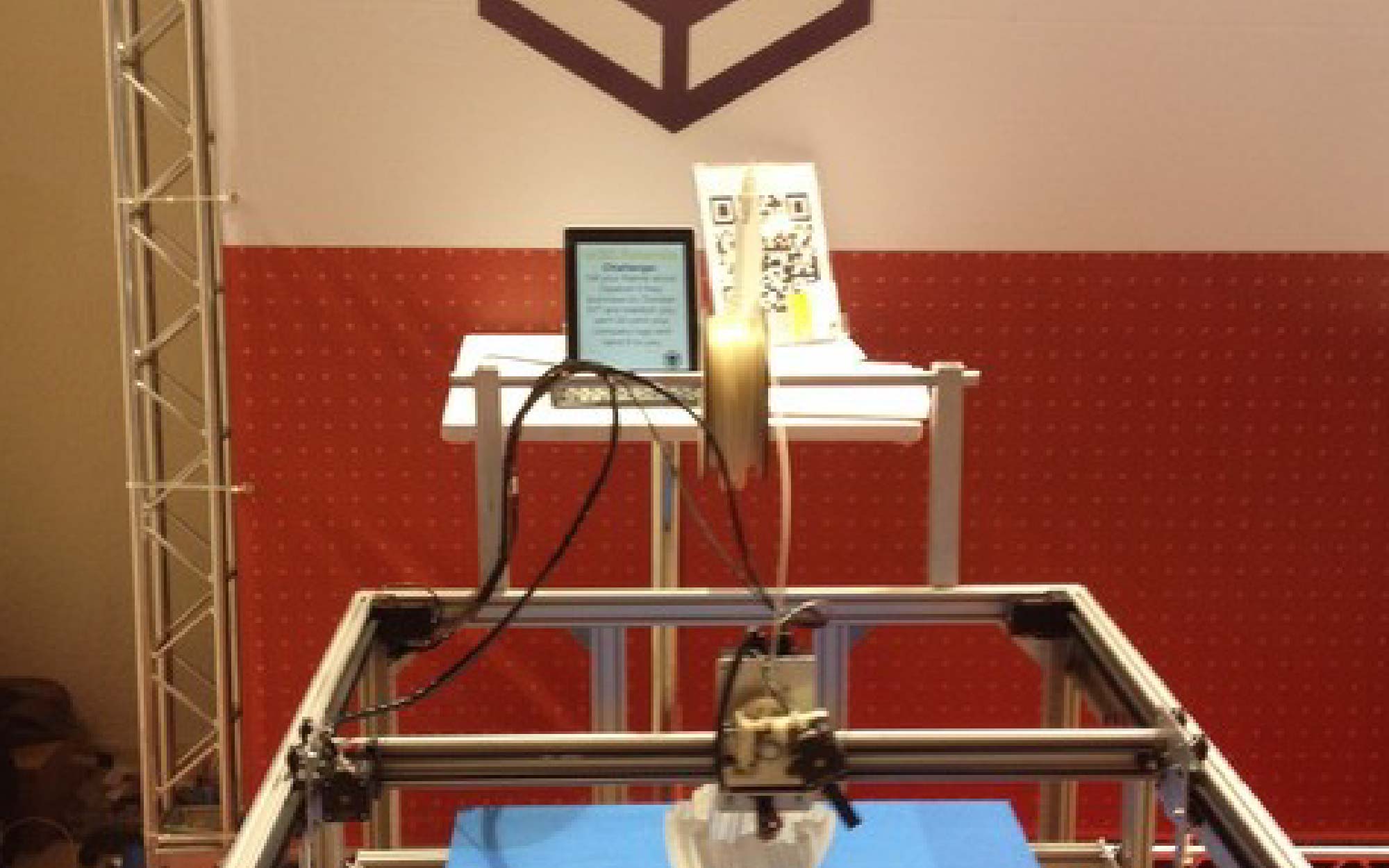* Original Post in August 2013 *
The second day at the conference was noticeably slower than the first. On top of some significant internet problems (and by that I mean there was no wifi for most of the day), there were less people stopping by the booth, and just less people in general. Regardless, we spent most of the day printing The Next Web logo (thanks Lorena!), which was given as a prize to Senseta for winning the startup rally.
With more free time than the day before, I had more opportunities to hop next door and watch the presenters. Kei Shimada kicked things off with a great quote by Albert Einstein: “If you can’t explain it simply, you don’t understand it well enough.” I took this advice to heart, explaining our 3D printer to bewildered onlookers with the simple one-word explanation: “Magic.”
The investor panel on stage – among them Startup Chile’s very own Horacio Melo – offered some sound advice regarding startups in Latin America. They urged the crowd to look to solve Latin America’s problems, rather than rushing to build the first thing they see on Tech Crunch and thinking it will work in the LatAm market. These solutions they said, will not be sexy. Think: B2B, software as a service companies. Horacio added: “Please no more social networks.”
My favorite speaker of the day was Paulo Veras from 99 Taxis. His talk was about how to scale your startup to a full-fledged business, but he also spent a lot of time talking about how to be a successfulstartup. A lot of his advice was very pertinent to re:3D’s current stage. Veras stressed the importance of hiring exceptional people. Startups need to take the time to seek out A players, and fix mistakes quickly when they arise. One of his other main points was about laser focus – a piece of advice re:3D hears a lot. Unfocused startups fail, he said. Have one product and nail it – then, when you become really good at that one thing, you can diversify.
On top of listening to some very interesting talks, we got to speak with more new people at the booth. Some brief points from the day:
- We can’t escape it – no matter what country we’re in we get the inevitable weapons question. Brazil is no exception – there was a notable fascination among the Brazilians with printing guns. One guy even went so far as to say, “Well, when you can print a gun, I’ll buy [a Gigabot].”
- There was some strong interest from several attendees (one disappointed Brazilian who wanted to walk out of the conference with our STGO MakerSpace-destined Gigabot), but mostly just a lot of entrepreneurs curious to see a 3D printer, but with no practical use for one.
- I tried Google Glass. I’ve seen a handful of people wearing them in the States, but I’ve never had the opportunity to hound them with questions like, “What do they do?”, “Do you use them everyday?”, and “Do you feel like a total idiot when you wear them?”. Today, I finally got the chance to ask all these questions and more. And – bonus! – I got to try them on and give them a spin myself.
Tomorrow is our final day in São Paulo – Matthew heads to Santiago to play musical chairs with some Gigabots while I head back to San Francisco. I get most of the day tomorrow to explore the city and I plan on making a 2nd, hopefully more successful than my first experience, stop at a Churrascaria.
Morgan Hamel
Blog Post Author

